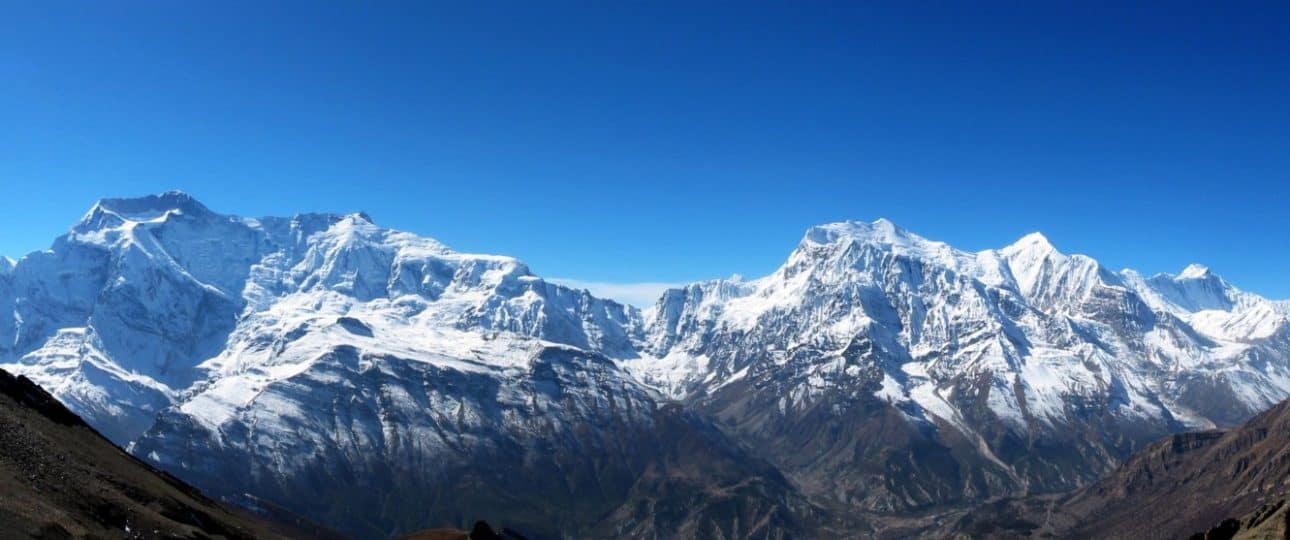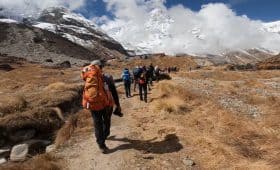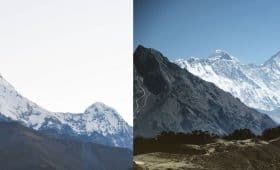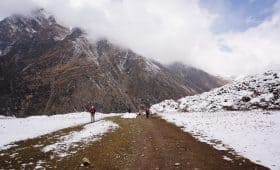Annapurna Base Camp Trek is the combination of panoramic mountains, traditional mountain life, and the biodiversity. While many inquire about the Annapurna Base Camp difficulty, the trek is a moderate one which welcomes both the novice as well as the experienced trekkers.
Annapurna Base Camp Trek is a relatively easy trek that can be done even during off seasons. The bamboo forests ecosystem and the rhododendron forest adds into the beauty of the trek.
This route will introduce you to the Gurung and Magar inhabitants of the region. Their warm hospitality will surely fill your heart.

The best views come after the hardest climb, this trek takes you to encounter the best panoramic view of the beautiful Annapurna range and many other mountains which are higher than 7000 meters.
The mountain scenery includes the Annapurna Massif (Annapurna I-IV), Dhaulagiri, Machhapuchhre, Manaslu, Gangapurna, Tilicho Peak, Pisang Peak and Paungda Danda and many other mountains which are higher than 7000 meters.
Unlike other treks, the Annapurna Base Camp Trek doesn’t require any advanced physical fitness level. So, anyone with a stable health condition can enjoy this trek and what lies along the scenic route.
This trek is absolutely amazing and comparatively easy in terms of the altitude.
You May Also Like:
5 Days Annapurna Base Camp Trek
Table of Contents
What are the main reasons behind the difficulty of Annapurna Base Camp trek?
Annapurna Base Camp trek presents challenges due to altitude gain, varied terrain and unpredictable weather conditions.
Trekkers must navigate rocky paths, steep ascents and descents while being prepared for changing weather patterns. Altitude sickness is a concern as the trek reaches heights exceeding 4,000 meters.
Additionally, the remote location and limited infrastructure necessitate self sufficiency and preparedness for emergencies.
Despite its moderate difficulty, proper planning, physical conditioning, and awareness of potential obstacles are essential for a rewarding trekking experience.
Below, you can find key points that play an important role in the difficulties of the Annapurna Base Camp trek.

The Trail
The trail is definitely not a straight and smooth one. There are a lot of ups and downs. And this is a challenging task.
You need to be focused. Even though this trek does not have any specific level of health and fitness requirements, the monotonous and steady up and down movement requires a much higher level of stamina and endurance.
So, it would be of great support if you work on increasing your stamina before this trek or any other treks.
It does consume a lot of energy. Because the path is full of ups and downs. It is slightly more difficult than traveling on a hurdle free route.
Therefore, carrying along energy boosters and adequate amount of food will be helpful. And yes, keeping yourself hydrated is a must.
It would be wise to plan your diet, supplements and snacks that you choose to take along.
One of the best ways to take care of the stamina related problem is to plan and finish treks at a constant rate. One day at a time without pressuring yourself. This way you don’t have to stress yourself and enjoy the moment.
You will be facilitated with a network of hotels and guest houses all along the trial. Here you can enjoy the service, hospitality and also rejuvenate and regain all the energy lost.
Also, if you feel you need to rest for the day, you can always choose a local accommodation in every few hours. Here trekkers can sit, rest or even spend the night for some sleep if they are tired.
Want more information? Send us your query, and our experts will get back to you within 24 hrs.
3300 steep stone steps to climb to the village of Ulleri
A 3300 step steep stone stairs on the way which is one of the most challenging tasks for trekkers. It is a long and steep path. But you can certainly take breaks and walk as per your ease and comfort.
Challenging experiences like these will also boost your confidence.

Exhaustion
Exhaustion is a common problem that most people usually face while on a long trek. You are the only one who is aware of your physical strength and endurance, so always keep your limitations in consideration.
It doesn’t matter how hard it was during your trek and how stressfully you managed to complete the trek. The only things that matter is the enriching experience you gain.
Building up your stamina and preparing for the journey will be very helpful.
Altitude Sickness
While traveling through a higher altitude like this, it is general that a trekker might go through symptoms like
– a throbbing headache that usually gets worse during the night and when you wake up,
– lack of appetite,
– feeling sick to your stomach. You may vomit.
– feeling weak and tired,
– waking up during the night and not sleeping well,
– feeling dizzy etc.
Those are the symptoms of Altitude Sickness.
Recent evidence suggests that mild altitude sickness symptoms are experienced by about up to 20% of trekkers at altitudes of up to 3,000 meters above sea level. And, Annapurna Base Camp Trek is an average altitude of more than 4000m.
Altitude sickness occurs due to the lesser and thinner availability of air at higher altitudes. It is quite common and normal problem. But, lack of precautions can lead to serious health problems. Learning about altitude sickness and its remedies will go a long way.
For instance, from extreme altitudes, above 4,500 meters, Acute Mountain Sickness can turn into High Altitude Pulmonary Edema (HAPE) or High Altitude Cerebral Edema (HACE) which are both very serious.
This problem can completely ruin your trekking program as the symptoms of acute mountain sickness will normally go away after two or three days of rest at a lower altitude. For this, you will have to return back down from where you ascended.
Severe syndromes such as HAPE can take weeks to disappear and may even require special medical attention and possible hospitalization.
However, there are some tips that may help travelers reduce the risk of this problem.
The best would be to ascend slowly, sleep low, taking regular and required medications, avoiding alcohol, delaying exercises while on trek etc.
Weather
Weather is also the most important factor to look upon when planning for a long trek or travel. Annapurna Base Camp Trek also has some specific seasons that are best and some are not at all recommended.
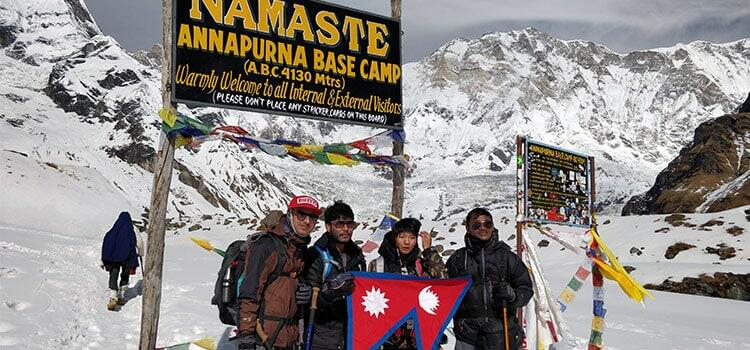
October-November
This is the most popular season for hiking as during this period everything along the route is refreshed, clean and vibrant. As a negative part to this, being the best season it is also the busiest period on the route.
April-May
After October-November, this is the second most popular season for trekking. Most of the snow has dissipated leaving crystal clear skies. There is often a magnificent haze that can be seen from the lower altitudes during May.
However, this soon passes and cannot be seen from higher altitude up from the trail.
June-September
As the monsoon period builds towards the end of May, the days become hotter and more humid which makes trekking at lower altitude quite uncomfortable. This is the monsoon period.
Although there are stories of torrential downpours, mudslides, and hordes of leeches in the Himalayas, this is rarely the case on the Annapurna Circuit.
However, the northern section whilst the southern part of the Annapurna Circuit near Pokhara does get a lot of rain. The northern parts often receive less than 10% of the rainfall due to its location within a rain shadow.
The best thing about trekking in monsoon is the flora. During this period, the surrounding vegetation and landscape are exceptionally beautiful.
December-March
This might not be the season that you would want to trek. This is the coldest period on the route. Depending on the altitude, daytime temperatures will be cold and at night, the temperature drops below the freezing point.
The trade-off is that the trails are much less busy than other seasons. Tea houses remain open during this period. Clouds prevail more frequently, but clear days are still common. Unfortunately, this period is also when avalanches in Annapurna are most common.
This is also the most dangerous problem while trekking in a mountainous region. Getting caught in an avalanche is one of the worst things that can happen to a climber, skier or trekker.
Well, the worst part of facing a difficult situation is when you are unprepared. But with a bit of pre-information and preparation, anything is possible.
The way a problem can be tackled will make you a lot experienced and prepared. Knowing about ways to handle a certain unpredictable situation will make you a lot wiser.
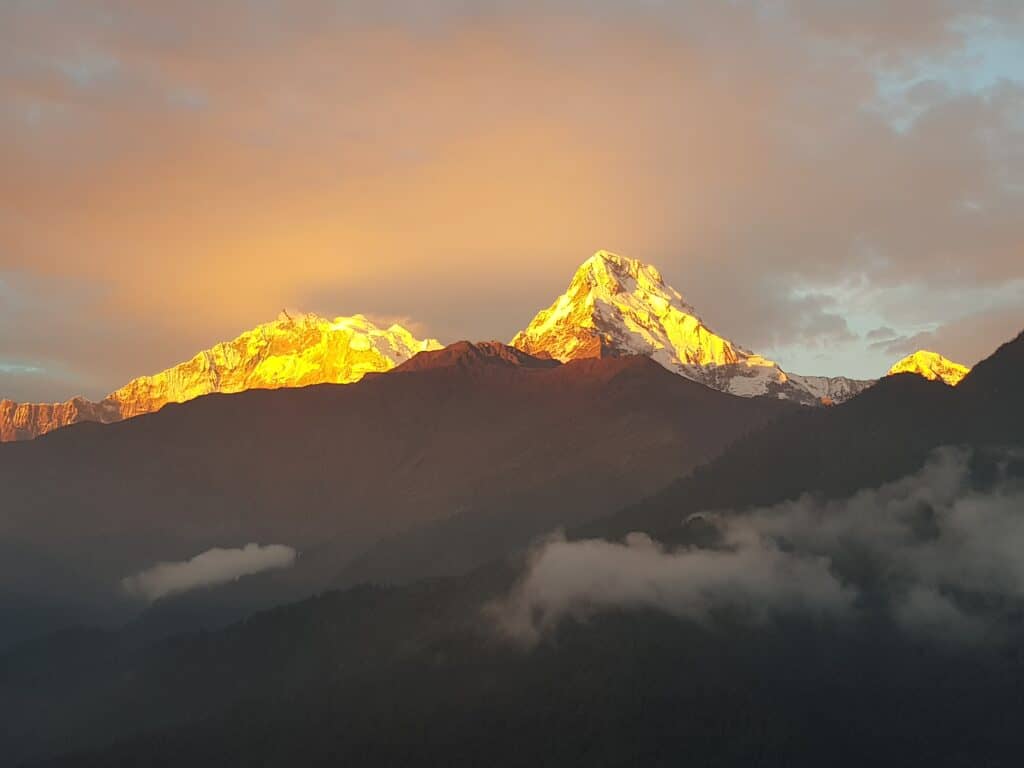
In summary, can I trek to Annapurna Base Camp?
Annapurna Base Camp Trek offers a blend of stunning mountain panoramas, rich cultural experiences and diverse biodiversity. Despite inquiries about its difficulty, the trek is moderate, suitable for both novices and seasoned trekkers.
The route showcases bamboo and rhododendron forests, providing a scenic backdrop. Trekkers encounter the warm hospitality of the Gurung and Magar communities along the way.
The trek culminates in breathtaking panoramic views of the Annapurna range and other peaks exceeding 7000 meters. Unlike more strenuous treks, this journey doesn’t demand advanced fitness levels, making it accessible to anyone in good health.
The trail, characterized by undulating terrain, requires focus and stamina, though it lacks specific fitness prerequisites. Proper planning, including stamina building exercises and hydration, is essential for a comfortable experience.
Trekkers find accommodations scattered along the trail, offering rest and replenishment. Despite challenges like the 3300 steep stone steps near Ulleri, such experiences foster confidence and resilience.
Altitude sickness poses a risk, especially at elevations exceeding 4000 meters. Understanding its symptoms and prevention strategies is crucial for a safe journey. Similarly, weather considerations, ranging from the vibrant seasons of October/November to the challenges of the monsoon and winter months, influence trekking conditions.
Despite potential obstacles, adequate preparation and a willingness to adapt ensure a rewarding and enriching experience on the Annapurna Base Camp Trek.
In summary, yes, you can trek to Annapurna Base Camp, though the trail’s difficulty is not more than what awaits you at the end.
Want more information? Send us your query, and our experts will get back to you within 24 hrs.

Madhav started working as a porter in 2001 and then moved on to work as a trekking guide. After working in the trekking and tourism industry for eight years, he co-founded Mosaic Adventure in 2009.
Madhav has trekked to most of the trekking destinations in Nepal, including Everest Base Camp Trek, Annapurna Base Camp, Annapurna Circuit Trek, Poon Hill Trek, Jomsom Muktinath Trek, Indigenous Peoples Trek, Langtang Valley Trek, Mardi Himal Trek, and all of the day hikes around Kathmandu.
He has also extensively traveled to other countries such as Australia, the USA, the UK, France, Hong Kong, Japan, China, the Philippines, the UAE, Saudi Arabia, Bahrain, Thailand, Turkey, and India. Madhav is the one who answers most of your questions about trekking and tours and helps to plan your trip by giving a personal touch.

